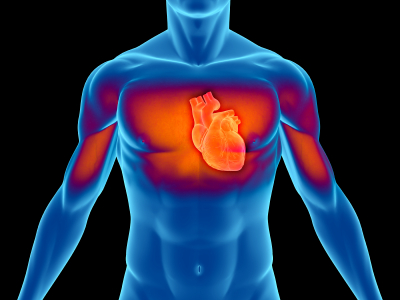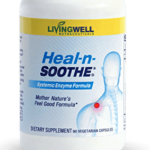 In a disease-specific sense, the top cause of death in the United States is heart disease, which is responsible for nearly 600,000 deaths (that’s one out of four) a year.[i] But that sounds pretty vague, doesn’t it?
In a disease-specific sense, the top cause of death in the United States is heart disease, which is responsible for nearly 600,000 deaths (that’s one out of four) a year.[i] But that sounds pretty vague, doesn’t it?
What exactly is heart disease? And, more importantly, what can you do to avoid becoming its next victim?
The American Heart Association (AHA) defines heart disease as such:[ii]
“Heart and blood vessel disease – cardiovascular disease also called heart disease – includes numerous problems, many of which are related to a process called atherosclerosis. Atherosclerosis is a condition that develops when a substance called plaque builds up in the walls of the arteries. This buildup narrows the arteries, making it harder for blood to flow through. If a blood clot forms, it can stop the blood flow. This can cause a heart attack or stroke.”
Yet this description again makes heart disease sound so very abstract … and like something that simply happens to you. If you dig a little bit deeper, though, you’ll find that the top cause of death could easily be described not as heart disease but as ignorance; specifically, ignorance about what underlies many, if not most, chronic diseases, including heart disease.
In a word, inflammation.
The Link Between Inflammation and Heart Disease
It’s widely known that elevated levels of C-reactive protein (CRP), a marker of inflammation in your body, are associated with an increased risk of heart disease. Dr. Andrew Weil wrote:[iii]
“The link between elevated CRP levels and heart disease has been demonstrated repeatedly, and there is some evidence that CRP may be a more important indicator of heart disease risk than high LDL (“bad”) cholesterol.
In an eight-year study involving 27,939 women led by Paul Ridker, MD, director of the Center for Cardiovascular Disease Prevention at Brigham and Women’s Hospital in Boston, more than half of the women who eventually developed heart disease had high CRP levels even though their LDL levels were not considered high. Dr. Ridker has estimated that the same may be true for 25 percent of the U.S. population.”
Even AHA acknowledges that inflammation is common in heart disease and stroke patients, and suggests it may be promote the formation of fatty plaques in the arteries:[iv]
“Think about a splinter in your finger or an abscess on a tooth,” said Donna Arnett, Ph.D., chair and professor of epidemiology at the School of Public Health at the University of Alabama at Birmingham and president of the American Heart Association. “Our body launches an attack with our white blood cells and chemicals that results in redness and swelling to kill the bacteria or rid the body of the intruder.”
Similarly, for the cardiovascular system, risk factors like cigarette smoking, high blood pressure and LDL (bad) cholesterol can “injure” the heart [leading to inflammation]. In turn, atherosclerosis, the buildup of fatty deposits in the inner walls of arteries, can develop. This narrows the arteries and increases the risk they’ll become blocked.”
Many Chronic Diseases Have an Inflammatory Component
It’s not only atherosclerosis and heart disease that are linked to inflammation. Many other chronic diseases, including type 2 diabetes, Alzheimer’s disease, cancer, obesity, digestive disorders and more are too. They don’t happen overnight of course. Rather, they’re the result of years’ worth of inflammatory damage in your body.
The Life Extension Foundation compiled this partial list of common medical conditions that are associated with chronic inflammation:[v]
| Diseases Related to Chronic Inflammation | |
| Disease | Mechanism |
| Allergy | Inflammatory cytokines induce autoimmune reactions |
| Alzheimer’s | Chronic inflammation destroys brain cells |
| Anemia | Inflammatory cytokines attack erythropoietin production |
| Aortic valve stenosis | Chronic inflammation damages heart valves |
| Arthritis | Inflammatory cytokines destroy joint cartilage and synovial fluid |
| Cancer | Chronic inflammation causes many cancers |
| Congestive heart failure | Chronic inflammation contributes to heart muscle wasting |
| Fibromyalgia | Inflammatory cytokines are elevated |
| Fibrosis | Inflammatory cytokines attack traumatized tissue |
| Heart attack | Chronic inflammation contributes to coronary atherosclerosis |
| Kidney failure | Inflammatory cytokines restrict circulation and damage nephrons |
| Lupus | Inflammatory cytokines induce an autoimmune attack |
| Pancreatitis | Inflammatory cytokines induce pancreatic cell injury |
| Psoriasis | Inflammatory cytokines induce dermatitis |
| Stroke | Chronic inflammation promoted thromboembolic events |
| Surgical complications | Inflammatory cytokines prevent healing |
Why is This GOOD News?
The fact that chronic inflammation underlies so many chronic diseases and top causes of death is a good thing because it means you can do something to protect your health. In many cases, these diseases develop slowly over time, the result of many years of poor diet, inactivity, excess alcohol, cigarette smoking, excessive stress and other unhealthy lifestyle choices. The key word here is ‘choices.’ You can make a decision, starting today, to drastically lower the inflammation in your own body — and you don’t need anti-inflammatory drugs to do it.
Writing in the journal Nutrition & Metabolism, researchers from Spain explained that chronic inflammatory diseases are stimulated by modern lifestyles that are preventing our bodies from healing and recovering naturally. They continue:[vi]
“We suggest that recent drastic changes in lifestyle, including diet and psycho-emotional stress, are responsible for inflammation and for disturbances in Resoleomics [the process of inflammation resolution]. In addition, current interventions, like chronic use of anti-inflammatory medication, suppress Resoleomics. These new lifestyle factors, including the use of medication, should be considered health hazards, as they are capable of long-term or chronic activation of the central stress axes.
The IS [immune system] is designed to produce solutions for fast, intensive hazards, not to cope with long-term, chronic stimulation. The never-ending stress factors of recent lifestyle changes have pushed the IS and the central stress system into a constant state of activity, leading to chronically unresolved inflammation and increased vulnerability for chronic disease. Our hypothesis is that modern diet, increased psycho-emotional stress and chronic use of anti-inflammatory medication disrupt the natural process of inflammation resolution ie Resoleomics.”
Common Symptoms of Chronic Inflammation —
‘The Silent Killer’
Chronic inflammation is sometimes referred to as the ‘silent killer’ because it often causes no symptoms at all, yet simmers silently until suddenly you’re diagnosed with a chronic disease. There are some symptoms to watch out for, though, which are often confused with other conditions. If you have some or a combination of the following, you could have unchecked inflammation in your body:[vii]
- Body aches and pains
- Congestion
- Frequent infections
- Diarrhea
- Dry eyes
- Indigestion
- Shortness of breath
- Skin outbreaks
- Swelling
- Stiffness
- Weight gain or obesity
Put Out the Fire of Chronic Inflammation Starting Today
Since chronic inflammation underlies most or all of today’s most deadly diseases in the Western world, this gives you great power, because chronic inflammation can be controlled with your lifestyle.
Lack of sleep, stress and exposure to environmental toxins (like pollution or household chemicals) certainly contribute, but what you put in your body — your food and drinks, for instance — also play a major role.
Because of this, a comprehensive anti-inflammatory diet, consisting of inflammation-fighting food, drinks and herbal supplements — is an invaluable tool to help keep this pervasive health threat at bay.
 Proteolytic enzymes also have an unsurpassed ability to fight chronic inflammation and underlying pain, operating on a “lock-and-key” basis, which means they can recognize good prostaglandins from bad prostaglandins (prostaglandins are hormone-like substances involved in inflammation).
Proteolytic enzymes also have an unsurpassed ability to fight chronic inflammation and underlying pain, operating on a “lock-and-key” basis, which means they can recognize good prostaglandins from bad prostaglandins (prostaglandins are hormone-like substances involved in inflammation).
When proteolytic enzymes’ teeth fit into a ‘bad’ prostaglandin that’s already run its course and has no more use, they dispose of it to let the GOOD prostaglandin come in and get rid of the pain. Plus, these enzymes work throughout your entire body to help it fight inflammation … dissolve scar tissue … cleanse and thin your blood … even boost cardiovascular, respiratory and immune function. Proteolytic enzymes are naturally produced in your pancreas, but your natural production declines with age; these inflammation-busters become largely depleted as you hit 40 and over.
Fortunately, there’s Heal-n-Soothe®, the best systemic enzyme formula to replenish your body’s supply of vital enzymes. Heal-n-Soothe®” not only gives you the healing power of proteolytic enzymes in a convenient capsule but it also goes where no other proteolytic supplement has or will with 12 additional proven anti-inflammatory ingredients. If you want to lower your risk of the top causes of death in the United States, and you want to do it naturally, take matters into your own hands. Clean up your lifestyle and get Heal-n-Soothe®.
“This Stuff is God in a Bottle!”




I am not well informed.
I did not know what was in heal n soothe.
I clicked on the link.
I found the ingredients list and a clear explanation of what each ingredient does.
I ordered. It worked.
I am an ex commercial fisherman of 10 years and a very busy carpenter/cabinetmaker. I deal with pain on a moment to moment basis.
I will order more heal n soothe when my budget allows.